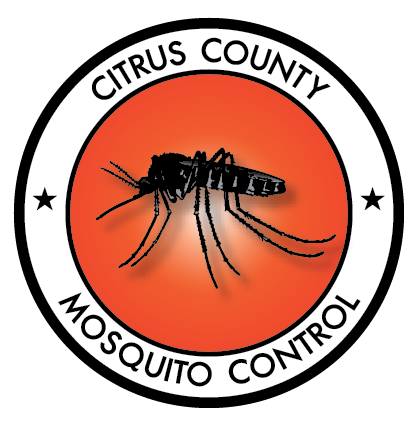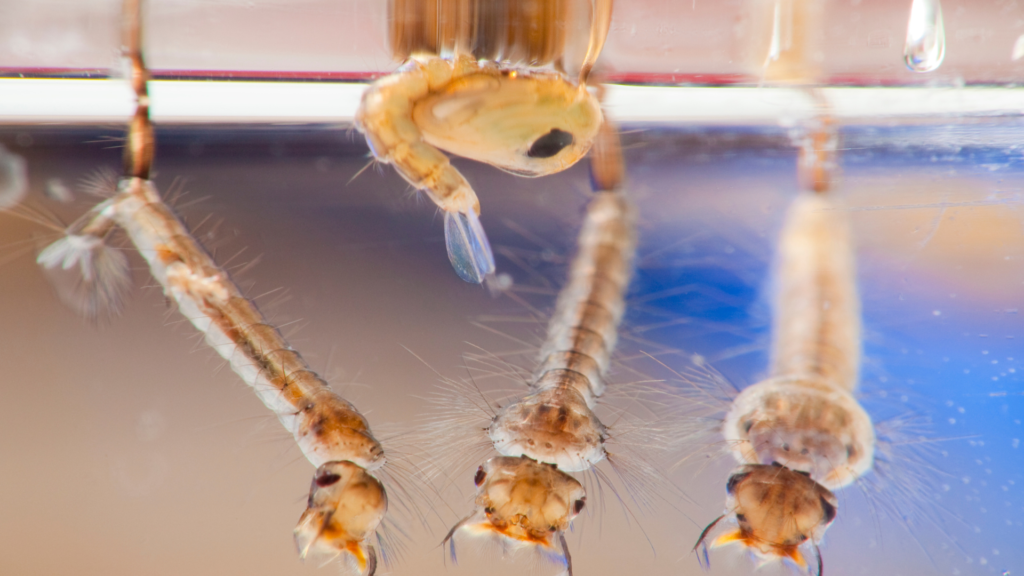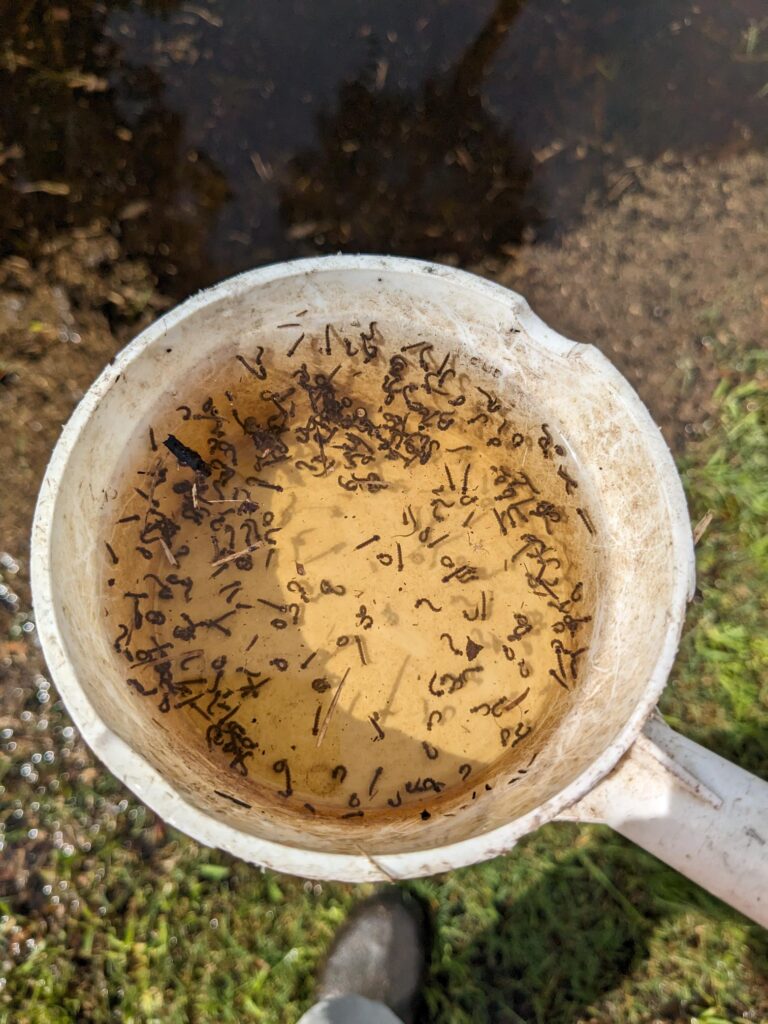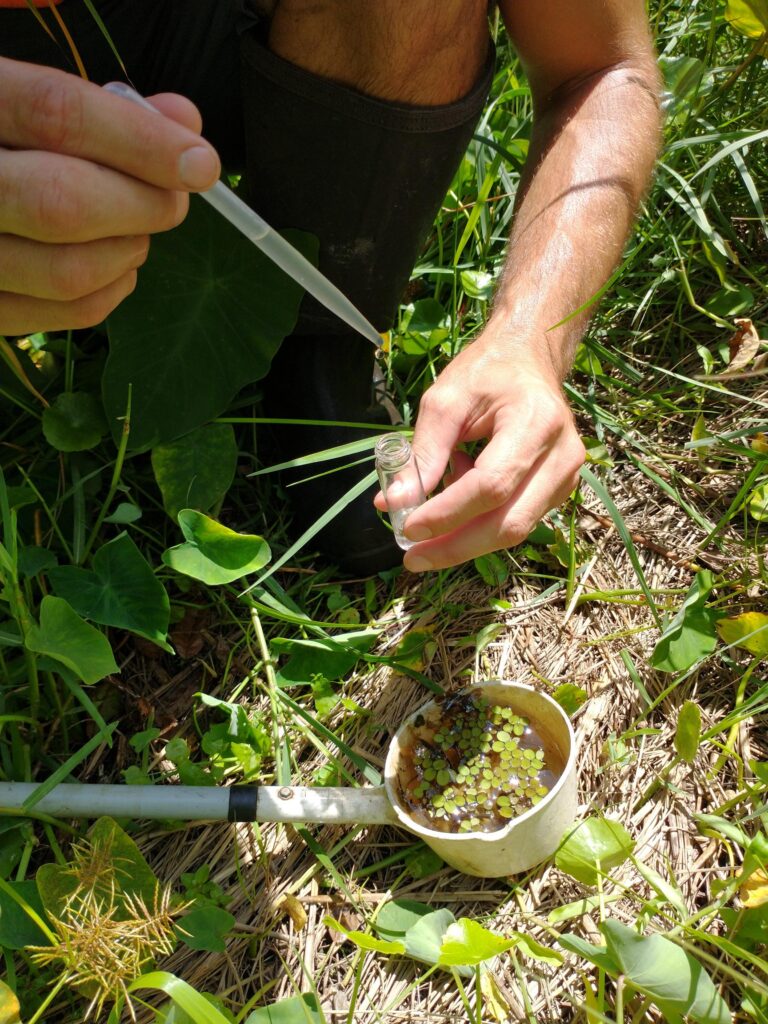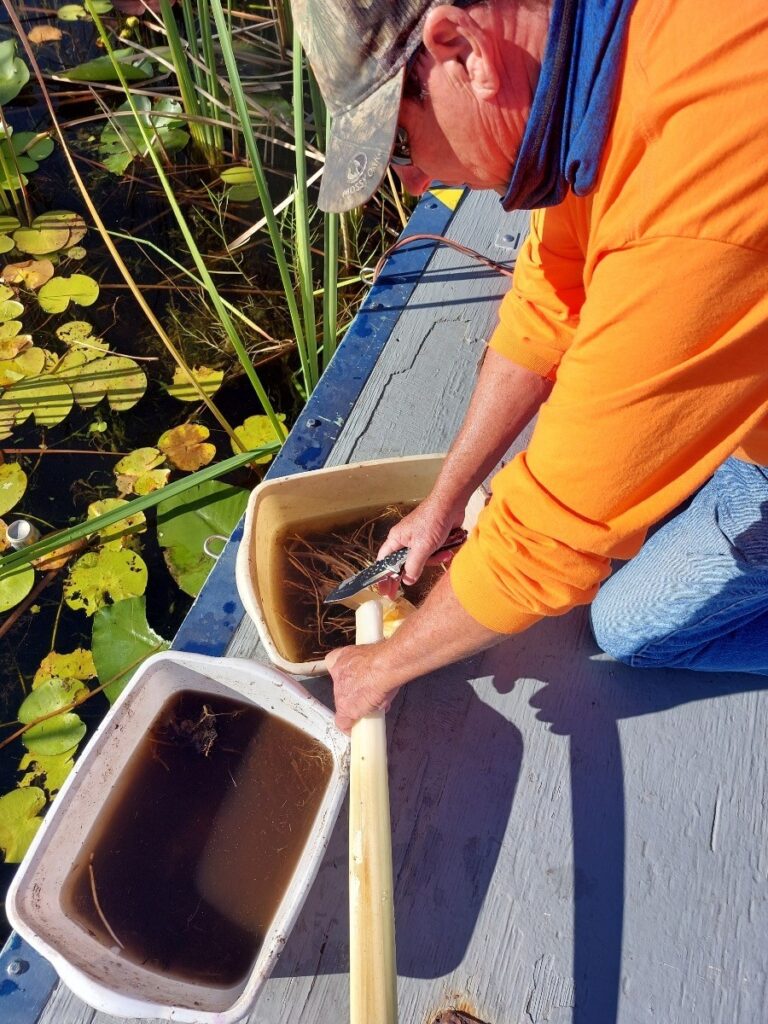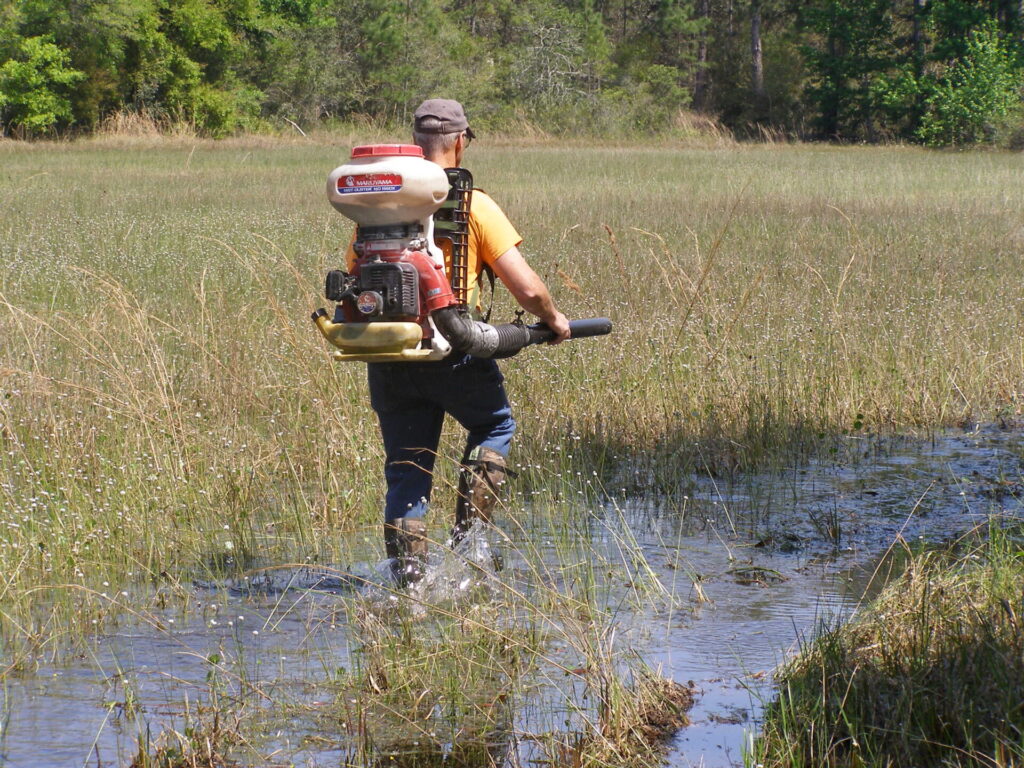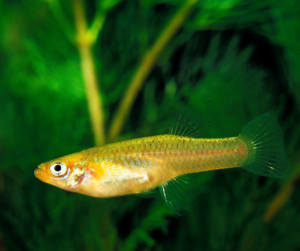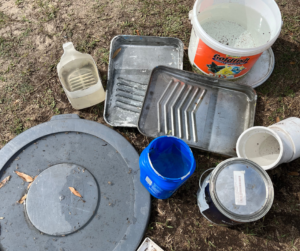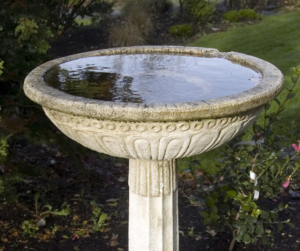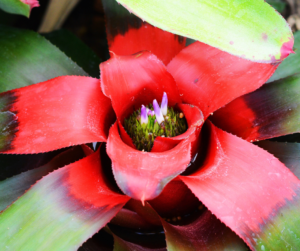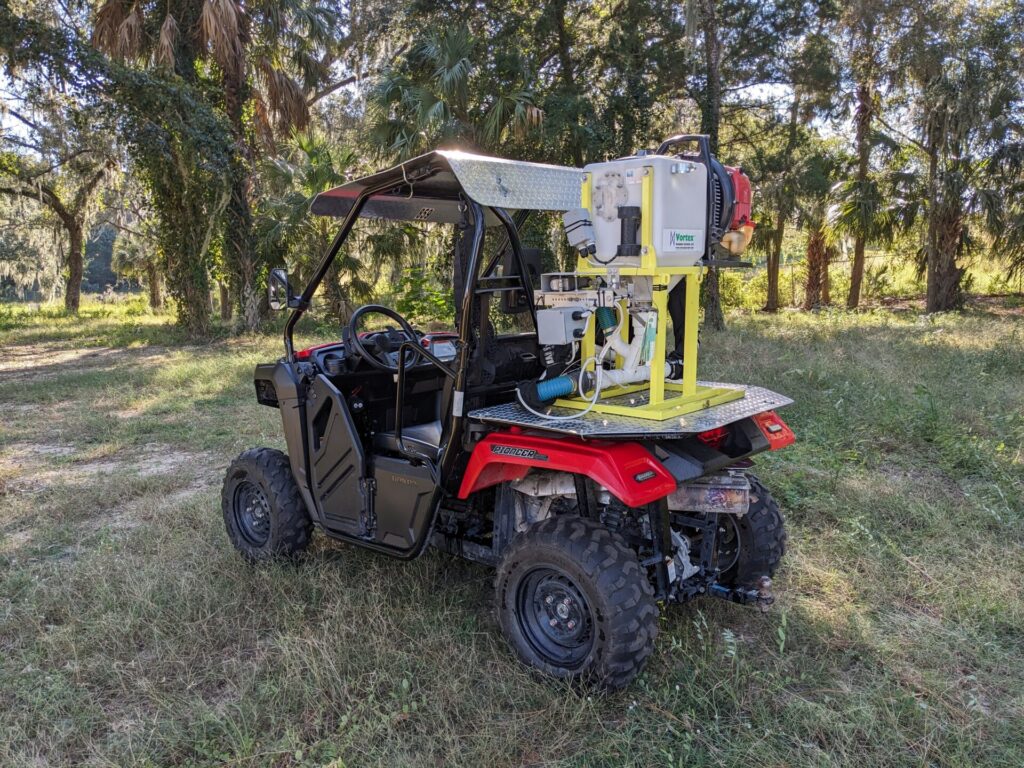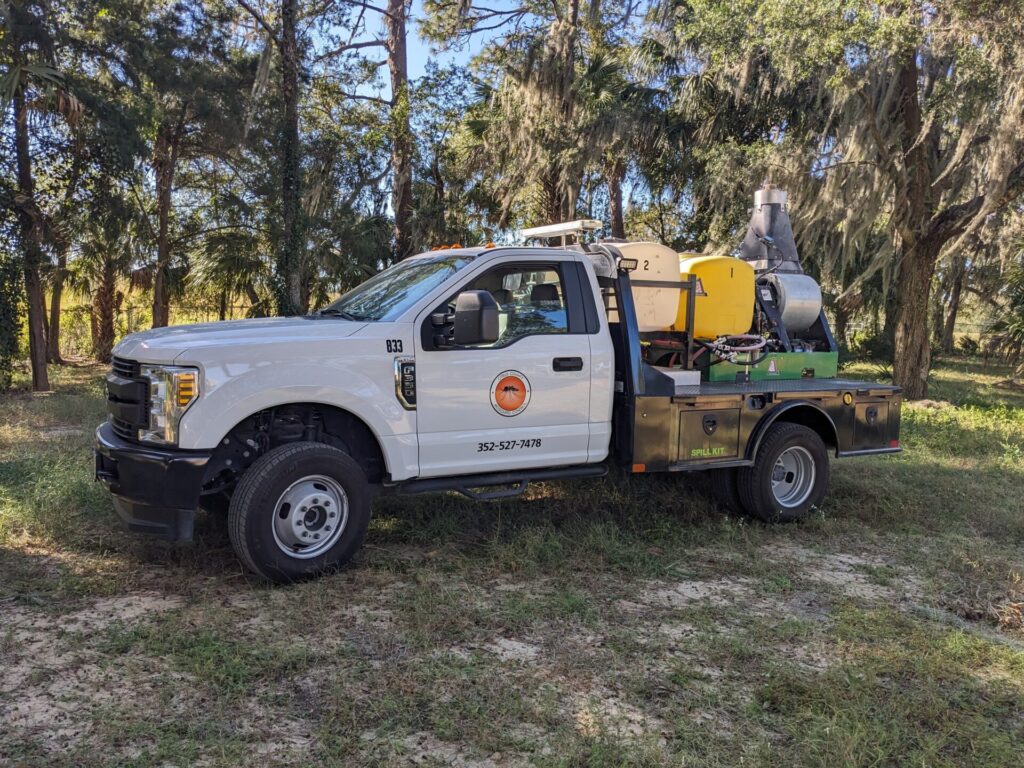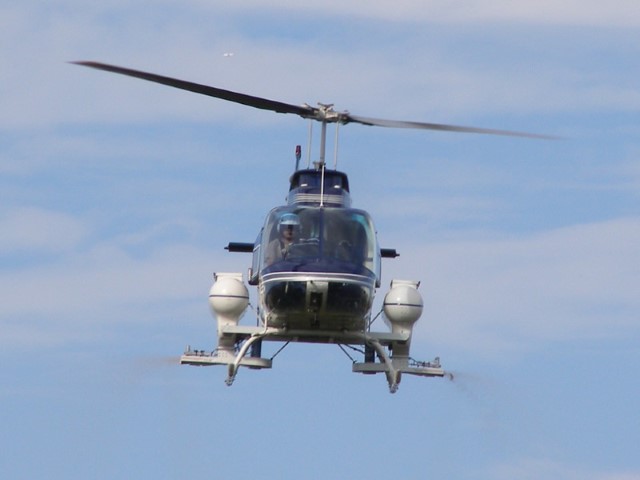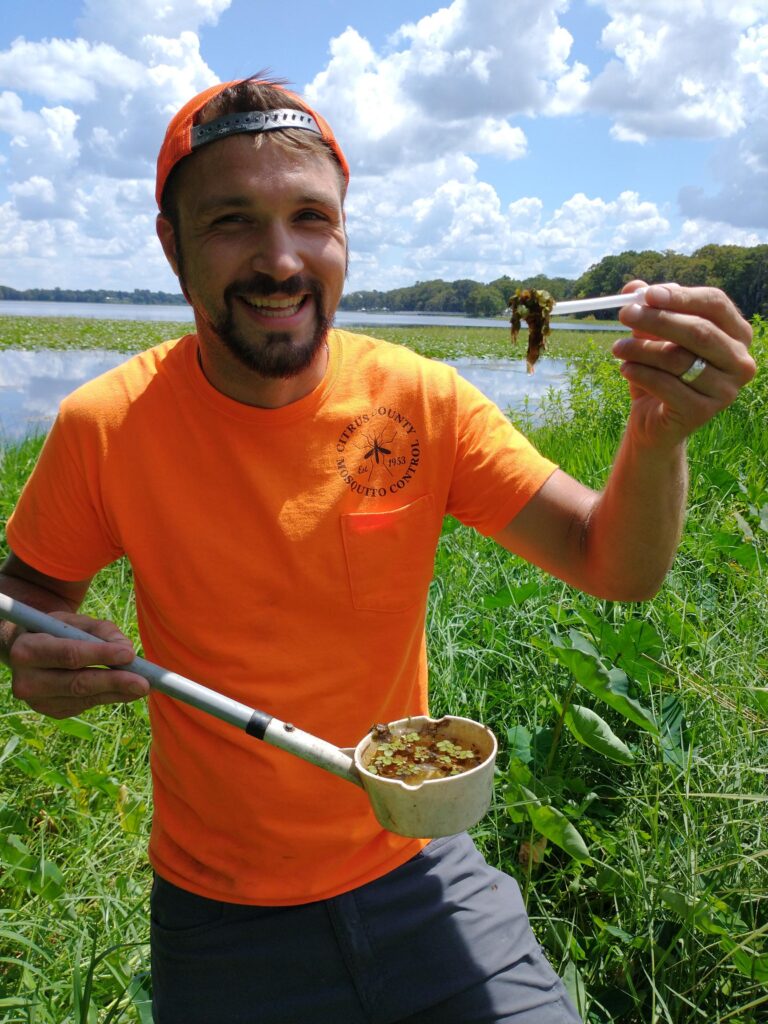Larviciding
What is Larviciding?
Larviciding is controlling mosquitoes before they become flying biting adults.
Larviciding is an ecologically safe method used to interrupt the development of mosquito larvae and pupae into adult mosquitoes. Once mosquitoes emerge, they can occupy a much larger area than the aquatic habitat which they came from. Adulticiding, or controlling flying adult mosquitoes, can take multiple treatments over a much larger area with products not as ecologically safe. CCMCD's larviciding program targets mosquitoes in the habitats where they reproduce. The majority of our control efforts by ground and air are daytime larviciding treatments.
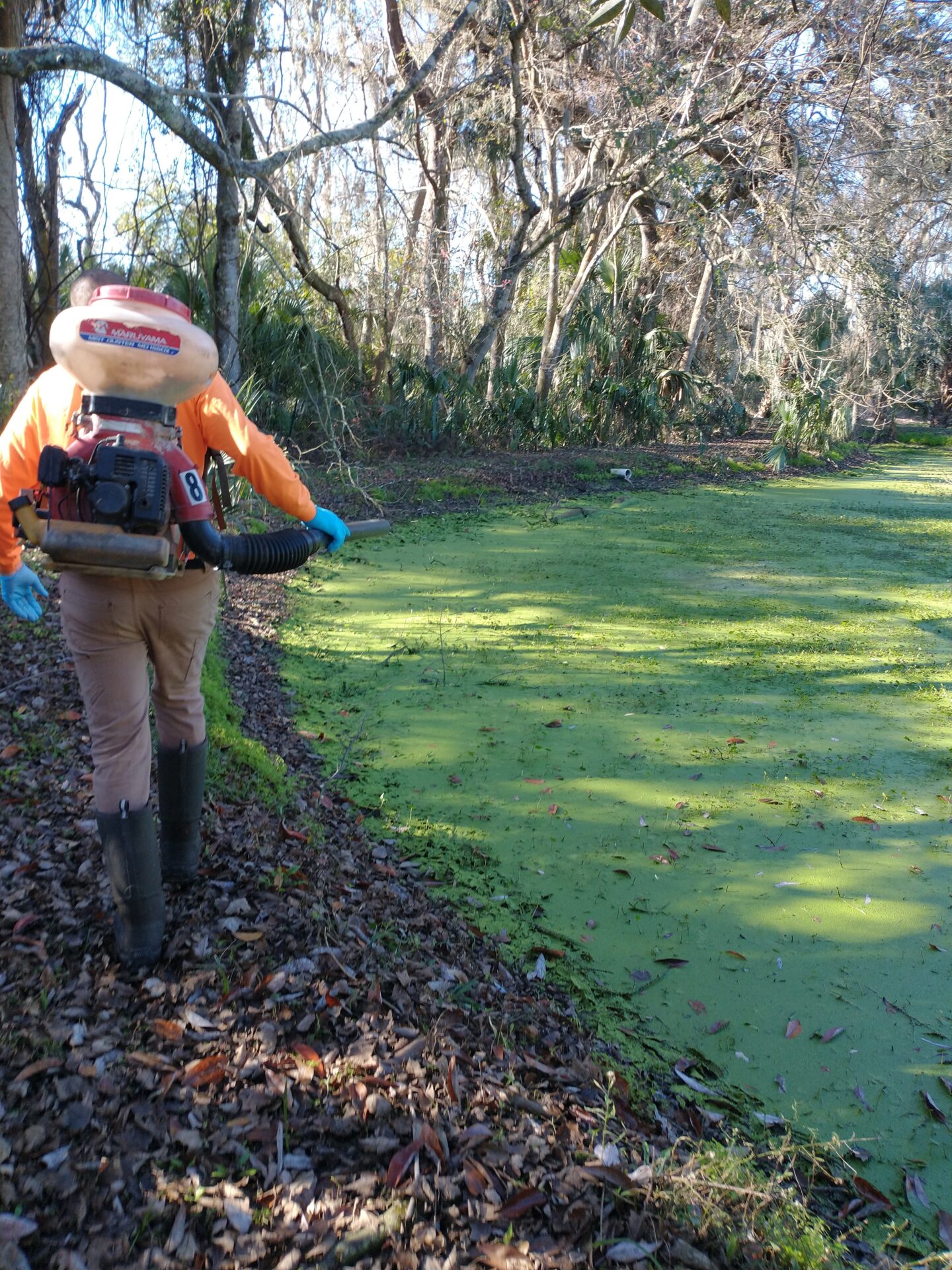
What Larviciding Products do we use?
At CCMCD we take pride in minimizing our impact on the environment by including the use of natural products and natural alternative methods to control mosquitoes in their aquatic habitat.
Bti (Bacillus thuringiensis israelensis) and Bs (Bacillus sphaericus) are naturally occurring soil bacteriums which control very few insects including mosquito larvae. Bti is quickly biodegraded and leaves no residue. Bs is used as a residual control on the disease carrying Culex mosquito species.
To reduce product resistance, we also include Spinosad and Methoprene in our product rotation. Spinosad is a product derived from a naturally occurring soil bacterium and the formulations CCMCD uses are classified as a Reduced Risk product by the EPA and some are OMRI (Organic Materials Review Institute) Listed. These classifications enable them to be used in and around organic agriculture. Methoprene is an insect growth regulator that prevents adult mosquito emergence from its immature stage so that it can never be a flying insect.
What Larviciding Methods do we use?
We apply our products as granules, tablets, briquettes, and liquids using a variety of techniques and equipment.
Mosquitoes need standing water to breed in. This includes the most common aquatic habitat, man-made containers. Especially containers around the home. Cleaning up these containers is the best way to remove the mosquito's breeding grounds. If they cannot be removed, cover them to prevent them from collecting water, dump them out after each rainfall, or flush them out every few days.
Biological controls, such as stocking long standing pools of water with gambusia fish, are a very effective natural tool in our arsenal. These "mosquito fish" love to feast on mosquito larvae and we are happy to help them do just that. We raise gambusia in our own hatchery and distribute them to ponds, swamps, drainage retention areas, and other semi-permanent fresh water bodies around the county.
What Equipment do we use?
We use a variety of equipment for larviciding. From small handheld devices for treating containers and very small areas to large equipment and aircraft for treating very large areas.
Some of our highlighted equipment includes:
